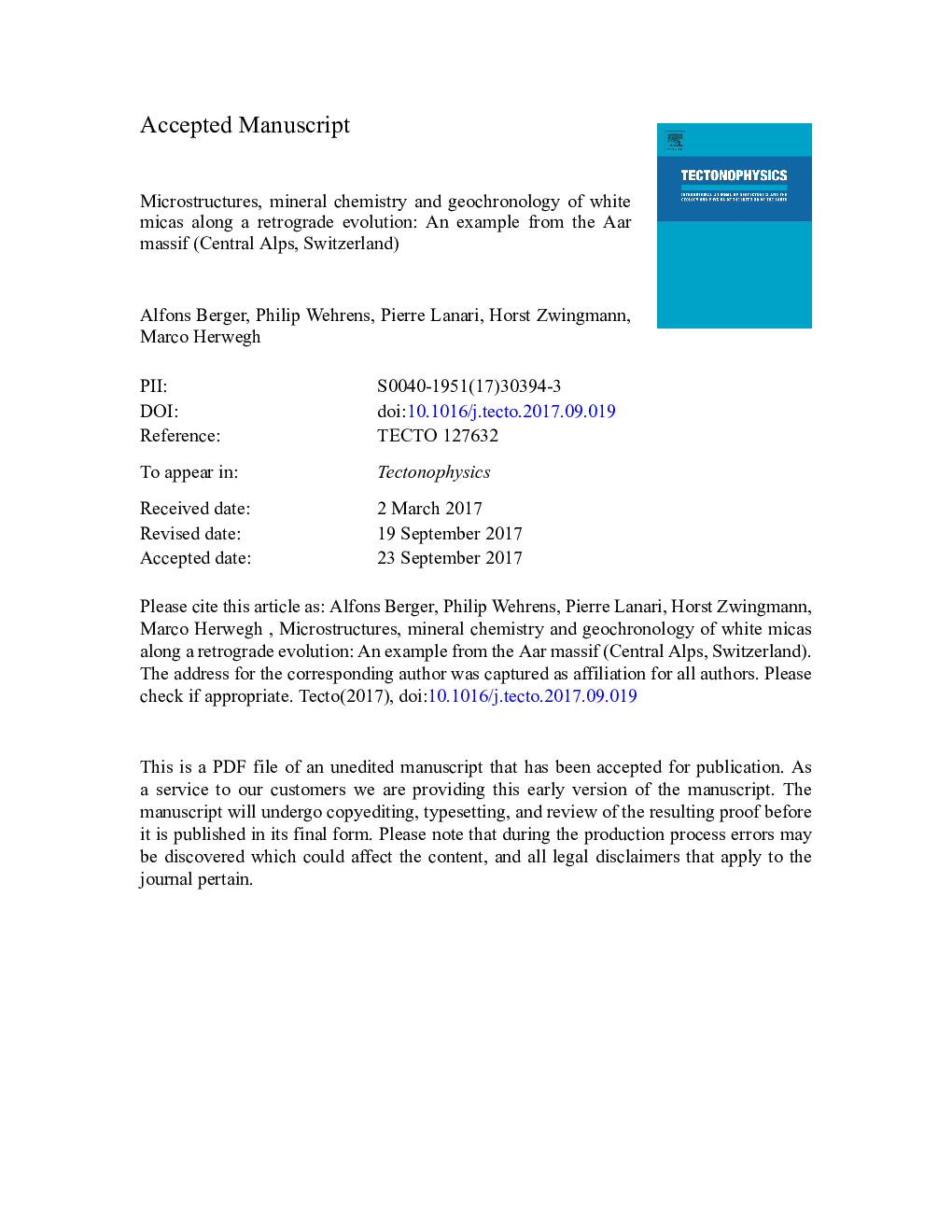| کد مقاله | کد نشریه | سال انتشار | مقاله انگلیسی | نسخه تمام متن |
|---|---|---|---|---|
| 5781446 | 1636688 | 2017 | 51 صفحه PDF | دانلود رایگان |
عنوان انگلیسی مقاله ISI
Microstructures, mineral chemistry and geochronology of white micas along a retrograde evolution: An example from the Aar massif (Central Alps, Switzerland)
ترجمه فارسی عنوان
ریزساختارها، شیمی معدنی و ژئوتکنولوژی میکا سفید در طول تکامل برگشت پذیر: نمونه ای از توده عار (آلپ مرکزی، سوئیس)
دانلود مقاله + سفارش ترجمه
دانلود مقاله ISI انگلیسی
رایگان برای ایرانیان
کلمات کلیدی
موضوعات مرتبط
مهندسی و علوم پایه
علوم زمین و سیارات
فرآیندهای سطح زمین
چکیده انگلیسی
This study investigates gneissic tectonites of different mechanical origins, and aims at unravelling the link between microstructures, white mica chemistry and K-Ar data. The highest temperature mylonitic deformation, which is investigated, is dominated by dislocation creep in monomineralic quartz, and viscous granular flow in polymineralic domains. These mylonites show homogenous mineral chemistry, resulting in robust and consistent K-Ar age data. The lowest temperature deformation investigated, is that of a retrograde brittle deformation, producing cohesionless fault gouges. Within the cohesionless fault gouges, frictional granular flow is considered as the main deformation mechanism. The K-bearing phases inside the fault gouges record no chemical resetting during this brittle overprint, but contain mechanically fragmented K-bearing micas and significant amounts of newly produced smectite. This yields K-Ar ages inside of a gouge that are in the range of adjacent mylonite ages, and may not represent the timing of gouge formation. In an effort to understand these uncertainties in K-Ar ages, detailed observations of the microstructural context of K-bearing white mica were made. Microstructural criteria in combination with quantitative element mapping allowed for the discrimination of five important mica-related processes: (1) fracturing/recrystallization of white mica; (2) (re)-precipitation of new fine-grained white mica inside the deforming rock matrix; (3) pseudomorphic replacement of precursor minerals by white mica and chlorite; (4) pseudomorphic replacement of pre-existing white mica without grain size reduction; and (5) remnant grains. The combination of these different processes led to a high variability in mineral chemistry and isotope data for tectonites, which relates directly to variations in the size of the equilibrium volumes. Despite the samples being highly deformed in the presence of fluids, inherited sheet silicates may survive. If inherited sheet silicates are present they contribute to an increase in both the chemical heterogeneity and the apparent K-Ar ages of a sample.
ناشر
Database: Elsevier - ScienceDirect (ساینس دایرکت)
Journal: Tectonophysics - Volume 721, 28 November 2017, Pages 179-195
Journal: Tectonophysics - Volume 721, 28 November 2017, Pages 179-195
نویسندگان
Alfons Berger, Philip Wehrens, Pierre Lanari, Horst Zwingmann, Marco Herwegh,
